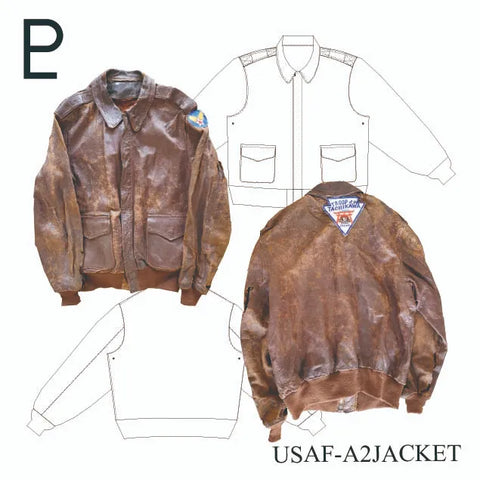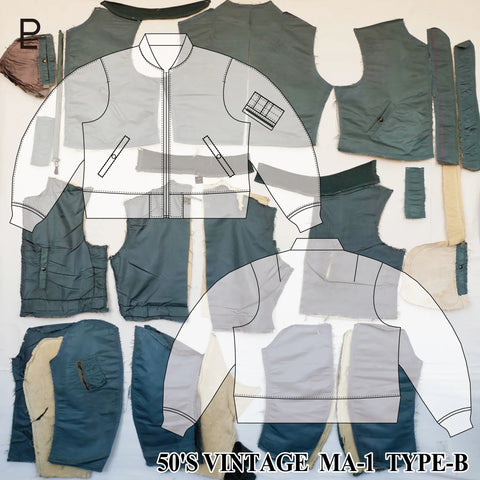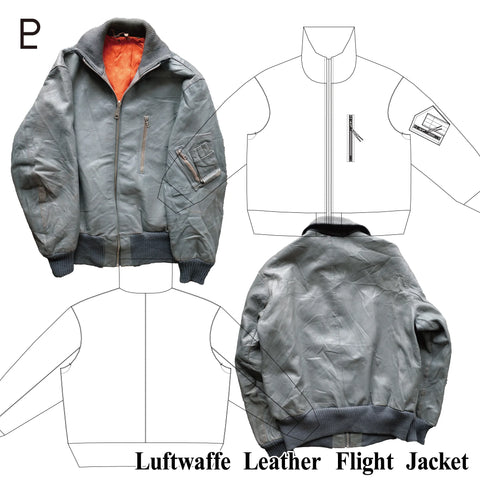FUKUWOHORU
OPPORTUNITY
"FUKUWOHORU" - Destruction and Observation
Our project "FUKUWOHORU" began with an encounter with a single trucker jacket. It wasn’t just any vintage wear. When I observed the jacket from a different angle than usual, it was as though I had opened the door to a new world, uncovering aspects I had never anticipated.
The jacket, a 1960s 3rd type G-Jean made by Levi's, held deep histories and narratives that could only be revealed through deconstruction. Each piece of fabric seemed to whisper stories of the trials and meticulous attention to detail of the craftsmen and the brand from that era, as if speaking across time.
The experimentation and the flow of time from those tumultuous decades past form an essential bridge to today's manufacturing practices. Making selections and creating based on historical context is not only vital for us today but also immensely enjoyable.
This commitment to detail is communicated to everyone who handles our products, albeit invisibly. What we cherish is not merely making items, but creating works of art that connect the past and present. That is the part of our story we want you to feel.
.
FUKUWOHORU vol.1
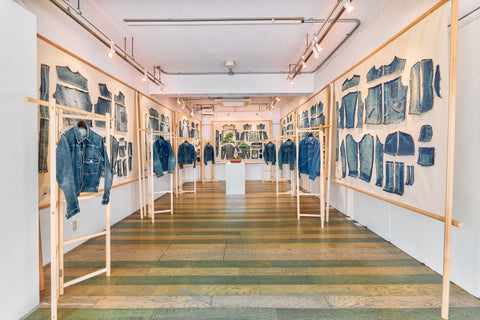
I am holding a solo exhibition as a place where people can actually see and touch the records of destruction and contemplation.
The first exhibition will be held in spring 2023, and so far the exhibition has been held three times in Tokyo and one in Korea.
In addition, we have a permanent exhibition space at our office in Kojima, Kurashiki City, Okayama Prefecture.
(Currently, the exhibition in Kojima is by appointment only and is limited to one group per day.)
The exhibition "FUKUWOHORU" is based on the concept of "Enthusiasm x Sincerity" and embodies part of the passionate manufacturing going on around the world.
We believe that enthusiasm makes craftsmanship deeper and more interesting.
This passion is at the heart of our research and activities, and we see value in proactively sharing the knowledge we gain with you, rather than keeping it to ourselves.
Through this exhibition, we will explore the depth and excitement of craftsmanship on a daily basis, and aim to go even deeper through real dialogue with our visitors. This will not just serve as a place for sharing knowledge, but also as a place for the exchange of creative inspiration.
Our hope is that this exhibition will encourage participants to change from "I can't do it without knowing" to "I know but I don't do it."
However, it is nearly impossible to create something that encompasses all knowledge.
However, in clothing production, which is based on a division of labor, the accumulated knowledge of each section can make the clothes that are sold all over the world deeper and more interesting.
Come experience the new value and excitement of manufacturing through the "FUKUWOHORU" exhibits and explore its appeal with us.
It's so fun! Please come and experience this place where we can all get excited together.
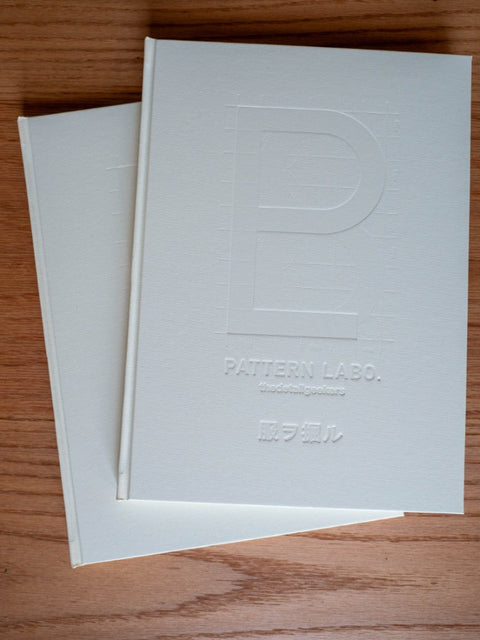
Book "FUKUWOHORU"
A book summarizing the contents of the "FUKUWOHORU" exhibition is created each time an exhibition is held.
Although it is a book, I do all the processes except binding by myself. I want people to feel at least a little of the discovery and excitement that comes from dismantling it. That's what I want.
"Do you sell vintage patterns?"
We receive many inquiries like this.
Although we are pattern makers, making patterns is our profession, we do not sell the patterns we create by dismantling. This decision is based on deep beliefs.
The first reason is that selling dismantled patterns somehow feels like "stealing and selling" and is not an comfortable experience.
This may be seen as just business, but we cannot accept it.
In fact, in the past, I have received advice from a respected business leader that I should "use weapons."
We consulted with them and felt it would be wrong not to try the product out, so we tried to sell it. However, we realized that this was against our philosophy and decided to stop selling it.
The second reason is that patterns made by dismantling vintage products necessarily require corrections by nature, and are therefore different from completely original products. It is difficult to get customers to fully understand this, and we felt that we could not sell honestly. For example, patterns made by dismantling a 501 model are also affected by the twists and distortions inherent in the original product. Therefore, we are very reluctant to sell these as "501 patterns" as they are.
For this reason we do not sell patterns and hope to be able to use these patterns in creative alternative ways.
Our activities pursue values that go beyond simply selling products; we value truth and honesty.



